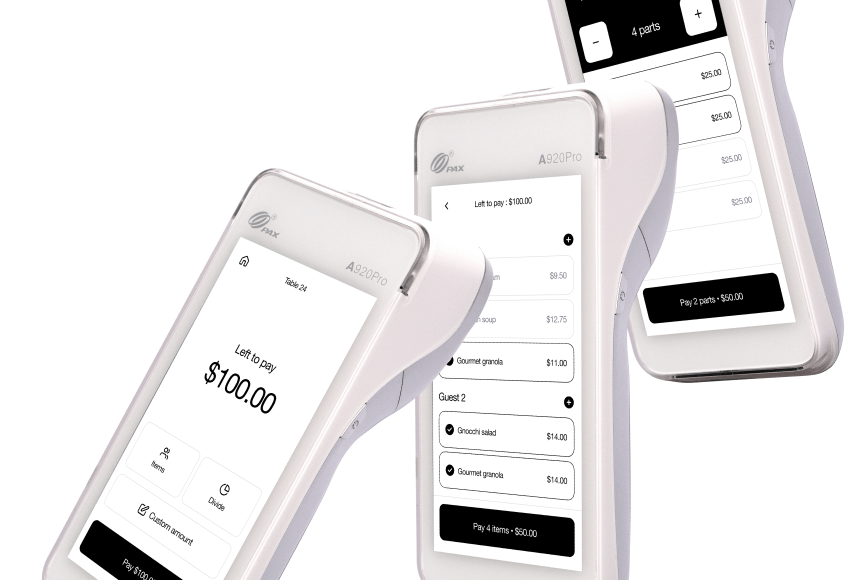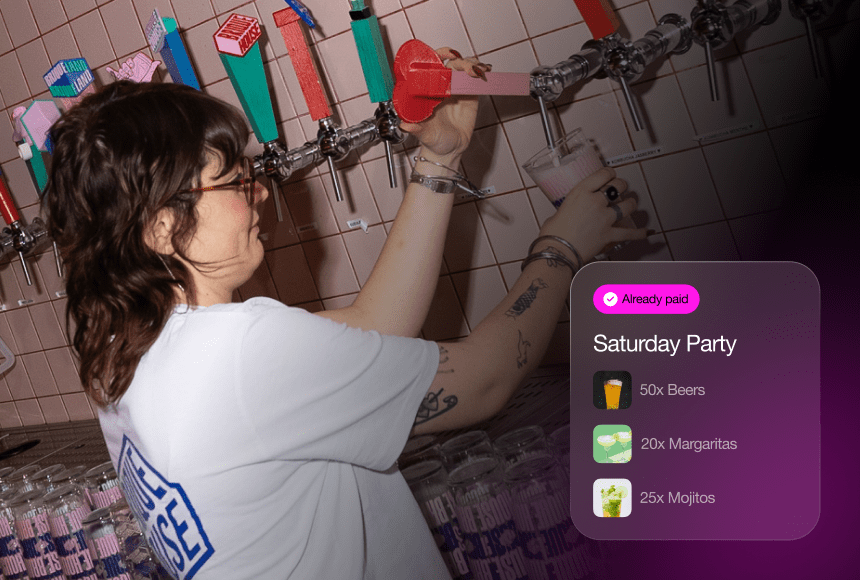
Empowering Your Team Through Contactless Innovation
Why QR Codes Are More Than Just Another Tech Trend
For many restaurants, the phrase “QR code ordering” conjures images of customers scanning a code at the table to browse digital menus and place orders. While that’s certainly part of the picture, the effects go far beyond modernizing how guests interact with your menu. For the people working in your restaurant—hosts, servers, bartenders, line cooks—QR code ordering can bring tangible relief, new efficiencies, and more room for genuine hospitality. It’s a shift in operations that directly impacts employee morale and overall performance.
According to the National Restaurant Association, many eateries are integrating technology to meet shifting customer expectations, while also supporting staff with new tools (source). When implemented thoughtfully, QR code ordering does exactly that: it simplifies repetitive tasks, frees up time, and ultimately enriches the role each employee plays in delivering an excellent guest experience.
In this article, we’ll explore how QR code ordering affects different facets of a restaurant worker’s day—from server responsibilities and kitchen communication to tips and team cohesion. You’ll walk away with practical insights on how adopting this technology can help your staff thrive, not just survive.
1. Reducing Repetitive Workload
Traditionally, servers juggle a range of tasks that can be repetitive and time-consuming—explaining the same specials over and over, running to the POS to punch in orders, delivering checks to each table, then returning to collect payment. With a QR code system, many of these tasks are streamlined:
- Order Entry: Instead of writing down orders or memorizing them, your team can rely on the digital interface to capture everything accurately. Diners scan the code, view the menu, and select their items themselves. Those selections go straight to the kitchen or bar.
- Menu Explanation: A well-designed digital menu can showcase photos, ingredient details, and even allergen notes—reducing the number of repetitive questions servers field.
- Payment and Tipping: Systems like sunday let diners pay via QR code, leave a tip, and even post a review without needing to wait for the check. This eliminates multiple back-and-forth trips to the table.
When these mundane steps are automated, employees can focus on high-value interactions—greeting diners, ensuring dishes come out perfectly, and creating a welcoming atmosphere that leads to stronger reviews and repeat business.
2. Boosting Staff Confidence and Morale
Being a server or host in a restaurant can be stressful. On busy nights, balancing multiple tables, special requests, and last-minute changes can quickly overwhelm even the most experienced employees. By offloading some of that administrative burden, QR code ordering eases the strain on your team.
- Fewer mix-ups: With digital ordering, the chances of a server mishearing a request or entering an order incorrectly go down dramatically, which reduces stressful mistakes.
- More breathing room: Staff no longer have to hustle over to every table the moment a new group arrives, or repeatedly ask if anyone’s ready to order. The guests handle the timing themselves.
- Better tip satisfaction: Freed from a frantic pace, servers can offer personal touches—something diners often reward with higher tips. Plus, a quick, streamlined checkout can encourage generosity.
When your workforce feels they have the tools to succeed under pressure, morale tends to rise. Employees who feel valued are less likely to leave, which can significantly reduce turnover costs.
3. Letting Servers Shine as Hospitality Experts
Some argue that digital ordering might depersonalize the dining experience. But in practice, many restaurants find the opposite: staff can use that extra bandwidth to create a more memorable visit for guests.
Instead of scribbling orders at lightning speed, servers can act as true hospitality experts, offering suggestions for wine pairings, sharing stories behind specialty dishes, or simply engaging diners in friendly conversation. They become ambassadors for the restaurant’s brand, not just order takers. This shift can also reduce burnout, as employees feel more engaged with their work.
Meanwhile, guests get better service. According to Restaurant Dive, about 50% of customers now look for a restaurant experience that merges convenience with a personal touch (source). QR code ordering helps achieve just that—balancing speed with a human element.
4. Cutting Down on Kitchen Chaos
Back-of-house staff also benefit from streamlined ordering. Handwritten tickets can be messy or incomplete, especially in the heat of a rush. Verbal instructions might get lost in the noise. With a QR-based system:
- Accurate digital tickets: Orders arrive in the kitchen with clear item details, modifications, and extras. No more deciphering someone’s handwriting or forgetting if a dish was “extra spicy.”
- Real-time updates: If a table decides to add another appetizer last minute, it shows up immediately. There’s less time wasted on repeating or verifying orders.
- Better pace management: The kitchen can see at a glance how many new orders have come in and plan accordingly, which helps prevent major bottlenecks.
The end result? The kitchen team can concentrate on what they do best: preparing dishes to perfection. That consistent quality also helps front-of-house staff feel confident in what they’re serving, fostering a sense of unity between the two teams.
5. Simplifying Tip Pooling and Reporting
Many restaurants pool tips, dividing them among servers, bussers, and other front-of-house roles. Managing this can get tricky, especially if you’re relying on a mix of cash tips, credit card slips, and nightly sign-outs. Digital payments through QR code ordering can make tip management more transparent and easier to track:
- Automatic record-keeping: Every tip is logged in the system, eliminating guesswork on who earned how much.
- Seamless distribution: If you use a tip pooling model, it’s simpler to allocate percentages once the system calculates total tips in real time.
- Reduced disputes: Clear data reduces the potential for confusion or arguments over tip amounts.
Streamlined tip management can lift a significant administrative burden from managers and ease tensions among staff who might worry about fair distribution.
6. Encouraging Team Collaboration
You might not think “team collaboration” when you first hear about QR codes, but easing operational burdens often translates to a more cohesive staff. When employees aren’t buried in minor tasks, they have more capacity to look out for each other. For instance:
- Servers help each other deliver plates: Instead of rushing back to the POS, staff can coordinate more fluidly, stepping in to deliver dishes or refill drinks when they see a need.
- Hosts keep track of table availability: Because servers spend less time order-taking, hosts get real-time updates about who has ordered, who is waiting for their check, and which tables will soon open up.
- Managers can assist strategically: With real-time data on orders and payments, managers can jump in exactly where they’re needed—maybe greeting a VIP or addressing a kitchen backlog—rather than micromanaging table visits.
When tasks are more equitably shared and staff trust the tools at their disposal, workplace camaraderie tends to rise—leading to a happier environment for both employees and customers.
7. Improving Occupational Safety
Restaurant work involves plenty of physical tasks, from carrying heavy trays to moving swiftly on slippery floors. While QR code ordering can’t eliminate every risk, it does cut down on tasks that can lead to accidents or fatigue. Think about the repeated motion of picking up and setting down menus, shuffling between the POS and each table, or juggling multiple checks in one hand. Fewer unnecessary steps mean:
- Less strain on joints: Over the course of a busy shift, saving a few hundred steps can add up, especially for older employees or those with existing joint issues.
- Reduced hallway traffic: If fewer staff are rushing to input orders, that’s less foot traffic behind the scenes. Collisions or slip-and-falls might become less frequent.
Employees who feel physically secure in their role tend to stay in the job longer and approach it with more positivity. This is particularly crucial in high-turnover industries like food service.
8. Real-Life Example: The Sunny Side Diner
Let’s look at a fictional but realistic example. The Sunny Side Diner, a bustling breakfast and brunch spot, used to see chaos during weekend mornings. Servers struggled to keep up with large parties, and the kitchen reeled from last-minute changes. After implementing a QR code ordering system, here’s what happened:
- Smoother peak hours: Guests sat down, scanned for the menu, and placed orders while servers refilled coffee and gave personal welcomes instead of dashing around.
- Reduced wait times: Because orders instantly appeared on the kitchen screens, “Sunny Side” cut table turnover time by nearly 15% during peak hours. Lines got shorter, and employees felt less pressured.
- Higher tips and morale: Freed from constant order-taking, servers spent more time suggesting side dishes and building rapport. Many reported higher tip averages and less end-of-shift fatigue.
- Easier daily close: The diner’s manager, Maria, found that reconciling tips and sales took half the usual time, thanks to the integrated system. She passed on some of those savings to the team through weekly bonuses, further boosting employee satisfaction.
For The Sunny Side Diner, the move to QR code ordering fundamentally shifted how employees approached their jobs. Less grunt work, more guest engagement, and a better bottom line—everyone won.
9. Adapting for Different Roles
Of course, not every employee role shifts in the same way. Here’s a quick glance at how various positions might evolve:
- Hosts: Freed from distributing menus, they can focus on greeting, seating efficiency, and assisting guests with scanning if needed.
- Servers: Transition from traditional order-taking to more specialized tasks like upselling, table-side recommendations, and problem-solving.
- Bartenders: Benefit from receiving clear digital drink orders, which helps maintain consistency and reduce wait times for bar tabs.
- Kitchen staff: Enjoy less confusion with direct, digital orders. They can see real-time ticket volumes and plan accordingly.
- Managers: Gain better oversight, with dashboards that reveal which tables have ordered, who has paid, and whether any item is sold out.
For each role, the transition might require some training and mindset shifts, but the outcome is generally a more efficient, less stressful workplace.
10. Training and Ongoing Support
While the benefits are clear, a successful QR code ordering system depends on proper implementation. Invest time in:
- Hands-on training sessions: Let employees scan the codes themselves, place mock orders, and see how everything flows from the diners’ perspective.
- Clear signage: Place quick-start instructions at each table and near the host stand so staff can easily guide any confused customers.
- Regular feedback loops: Encourage employees to share what’s working and what isn’t. Adjust your system or menu interface if recurring issues pop up.
- System integration: If you’re working with solutions like sunday or a similar platform, confirm it syncs smoothly with your existing POS to avoid data hiccups.
A structured rollout ensures employees feel confident, not overwhelmed. That confidence, in turn, positively influences how they speak to diners about this new technology.
Looking Ahead: A Healthier Workplace Dynamic
QR code ordering might seem like just another gadget in a sea of restaurant tech, but for employees, it can be the step that reinvents their day-to-day tasks for the better. By trimming repetitive duties, it lets staff serve as brand ambassadors rather than living order pads. It also streamlines communication, cutting down on errors and confusion between front-of-house and back-of-house.
As restaurants continue to face staffing challenges, a technology that lightens the load and improves the workplace environment can be a major competitive advantage. According to Restaurant Business Online, establishments that invest in simplifying operations are more likely to retain experienced workers and maintain consistent service levels (source).
Ultimately, a happier, more engaged staff often leads to delighted customers—and better profitability. When your team believes in the tools at their disposal, they show up with energy, enthusiasm, and the desire to create an unforgettable dining experience. That synergy between employees and technology is exactly what forward-thinking restaurants are harnessing to stand out in a crowded industry.
So if you’re considering QR code ordering primarily for customer convenience, remember the people behind the scenes. This technology can deeply change the everyday routine of your staff—for the better—leading to a more fulfilling work environment and a dining experience that truly wows. Give your team the chance to flourish, and watch the positive changes ripple through every aspect of your business.
Find out more today
Drop us your details below and we’ll reach out within the next 24h



